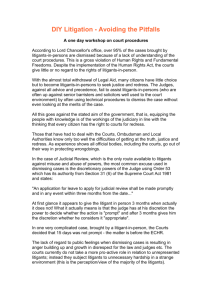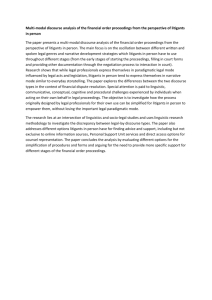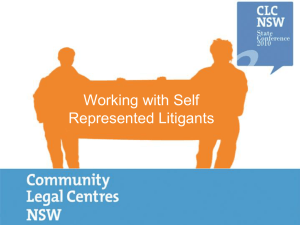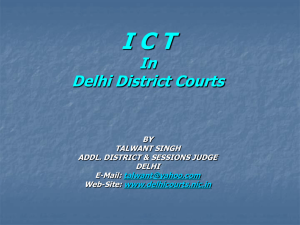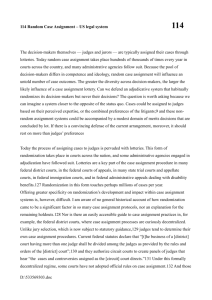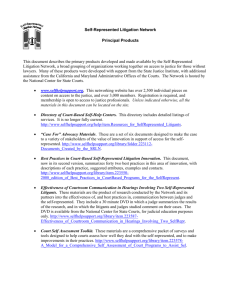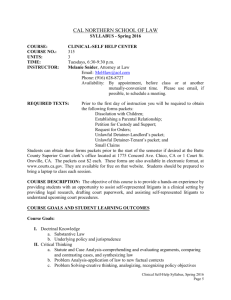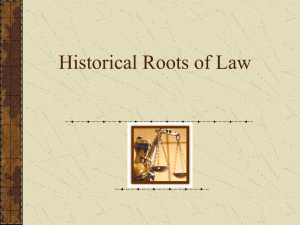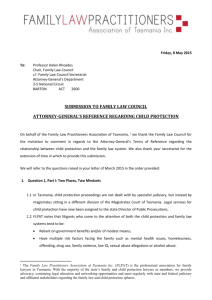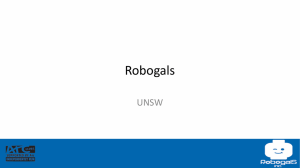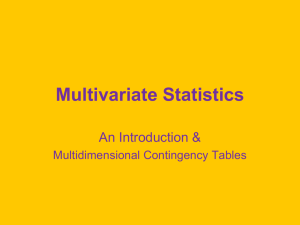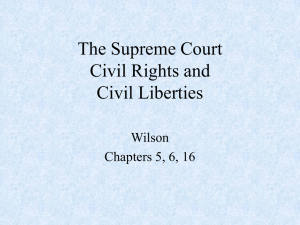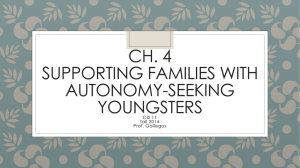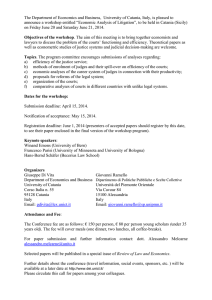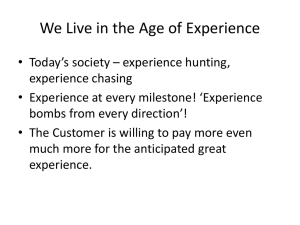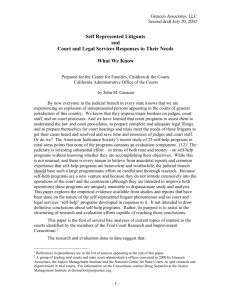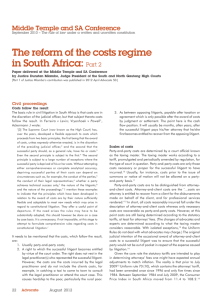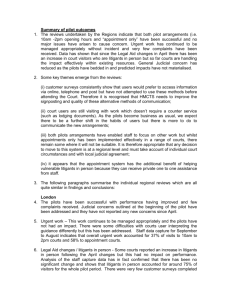Building the Capacity for Justice System Innovation
advertisement
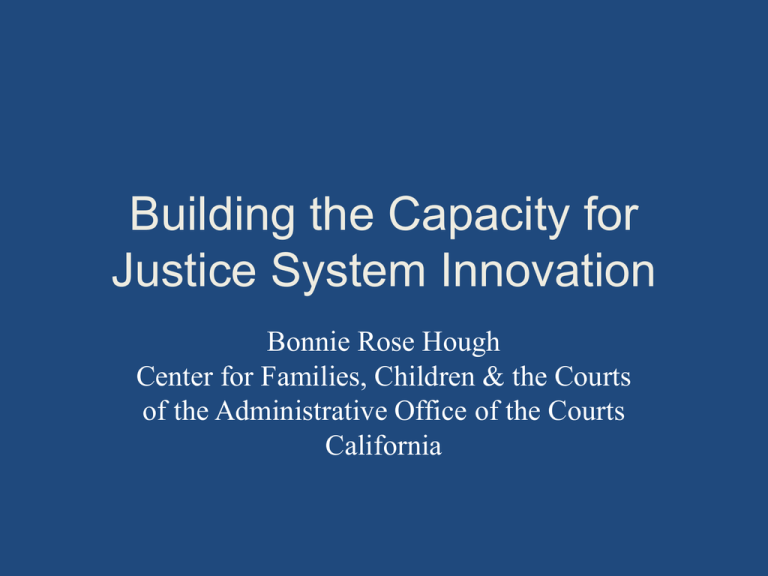
Building the Capacity for Justice System Innovation Bonnie Rose Hough Center for Families, Children & the Courts of the Administrative Office of the Courts California California – in round numbers • 38 million residents • 5.6 million – population in poverty • More than 40% of residents speak a language other than English at home • 2,000 judges • 58 counties – Los Angeles -10 million residents – Alpine - 1,500 residents • State court budget cut by 1/3 in last 4 years Why do California courts care? • 70% of divorce cases involve at least one person without an attorney at beginning of a case – 80% by the end of a case • 90% of domestic violence cases involve no attorneys • 90% of tenants in eviction cases don’t have attorneys – 30% of landlords don’t • Many people start by going to court rather than to a lawyer Since 1997 • State funds increase – from 0 - $40 million • Vast majority of those SRLs are getting some level of assistance – often appropriate level • Cultural changes – – – – – Partnerships between court and legal aid Judges – much more comfortable in role Bar generally supportive – increasingly unbundling Court staff – providing information, focus on helping people through system People with legal needs • • • • • • Over 1 million people served per year 4 million users of the self-help website Happier with court system Getting their cases resolved Generally take less time than attorneys Getting referrals to appropriate help including counsel Lessons learned #1 • There is a unity of interest between courts and public in providing assistance to help people handle their court case Guardianship Assistance Year Service Provided Guardianship Hearing Continuances 2002 1-on-1 assistance 39 2003 1-on-1 assistance 7 2004 None 402 2005 None 366 2006 Workshops 98 2007 Workshops 118 2008 Workshops 180 Lessons Learned #2 • It is easier to change systems and provide extensive education for • 2,000 judges • 160,000 court staff than 38,000,000 potential represented litigants New skills and changing expectations • Smartest person is one who helps people address their legal need – not the one who can find the most errors • Smartest person is one who can figure out how to explain complicated concepts in plain language – not one who knows all legal terms • Not a Perry Mason judge – often more of a facilitated discussion Procedural Fairness • Research findings show that people tend to care more about how they were treated by the system than by the outcome itself - Voice (feel like they got to tell their story) - Respect (litigants feel respected) - Understanding (litigants understood process, what to do) - Helpfulness (litigants believe court trying to be helpful) Education Benchguide Role Play On-line, just in time education Resources for referrals Use research to support education Lesson Learned 3 - Welcome trips to the doctor • • • • Technical language Not at one’s best Often big complicated buildings Potentially high stakes - but often not (when was the last time you had a lobotomy?) Things to consider • • • • • How are you directed? How long do you wait? How are you treated? How are they doing triage? How well do the providers seem to work together? • What guidance do you get for aftercare? • How do they work with the lay helper? Ideas • • • • • • Prescription pads between services Tourguide – self-assessment tool for courts Checklists Signage Handouts on next steps – referral to websites Education on active listening – permission to be kind Lesson learned #4 – continue to evolve Identify what issues you are trying to resolve – preferably from user perspective Try new solutions Evaluate and continue to refine Share findings – learn from others Develop system for passing knowledge to new staff Workshops Case management • Build automated check-in points into case management system • Send email / text message / mail to litigants who haven’t completed steps alerting them about that and referring to self-help • Judge looks at every court hearing as settlement opportunity Self-Represented Litigant Days • Schedule cases involving self-represented litigants for one calendar • Get as many resources as possible into that courtroom – self-help, mediation, legal aid, relevant social services, etc. and work to get cases resolved • Great pro bono work for attorneys – short, focused, tangible Simplify Lesson 5 – Provide staff support • Carve some money from direct service to provide coordination, education, support for volunteer leadership • Use that person to get others engaged • Be strategic about who is best to do what work – Volunteer leadership v. staff Role of court self help attorney • Not only providing direct legal assistance and information • But voice with the judges and administration about what changes need to be made to appropriately respond to the needs of low income people coming before the court Lesson 6 – A little seed money goes a long way • Allows interested people to get together • Leverages other resources • Identifies project that needs to be done Lesson 7 – Use technology for what it’s good for – Computers: • Remembering facts (e.g., asks a question only once) • Applying rules consistently • Creating beautiful paperwork – People: • Triage • Teaching and communicating emotional support KEY IDEAS • Boundaries are rapidly changing • Doesn’t have to work for everyone unless you don’t offer other services Advocates or selfrepresented litigants answer questions during an interview. A personalized document is created from the answers. The answers can be saved and reused. Support for using on-line tools
